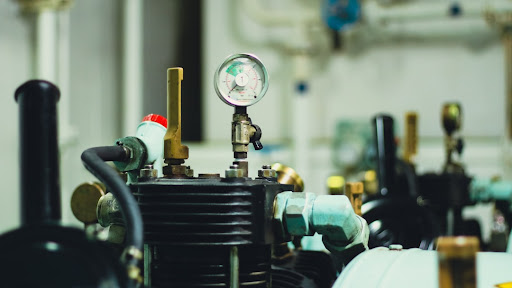
Industrial businesses often rely on air compressors to power their tools and machinery. One of the most common types of air compressors used across industries is the reciprocating air compressor. Choosing the right air compressor for your specific requirements is crucial as it directly impacts productivity, efficiency, and energy consumption. In this article, we’ll help you understand the various factors to consider when selecting the right reciprocating air compressor for your industrial needs.
Understanding Reciprocating Air Compressors
Reciprocating air compressors, also known as piston compressors, operate on the principle of reciprocation, which involves the movement of a piston within a cylinder to generate compressed air. Reciprocating compressors come in single-stage and two-stage varieties, depending on the pressure requirements. Single-stage compressors are typically suited for tasks requiring lower pressure, while two-stage compressors provide higher pressure suitable for heavy-duty industrial applications.
When selecting a reciprocating compressor, factors such as power source, tank size, and efficiency should be considered. Most reciprocating compressors are electrically powered, but gas or diesel options may be available depending on your specific needs. The air storage tank size is also critical to ensure an adequate air supply for your tools and equipment. A larger tank will provide longer run times, but will also require more space and higher energy consumption. Finally, efficiency should be evaluated by comparing the compressors’ Cubic Feet per Minute (CFM) output and power consumption to ensure the chosen compressor meets your requirements without consuming excessive energy.
Maintenance requirements and cost of ownership are also vital factors to consider when choosing a reciprocating air compressor. Reciprocating compressors generally require more maintenance than other types of compressors, like rotary screw compressors. However, their simplistic design allows for lower upfront costs and easier maintenance tasks, making them a popular choice for many industries.
Matching Compressor Capacities With Your Application
To ensure your reciprocating compressor meets the demands of your business, it’s essential to match its capacity with the requirements of your tools and equipment. Begin by calculating the total air consumption of your tools, factoring in their CFM requirements and duty cycles. This information will give you an estimate of the compressor capacity required to meet your application demands.
Beyond capacity, consider the required pressure levels of your equipment. Low-pressure applications, such as inflating tires or powering airbrushes, may only require a single-stage compressor. However, more demanding applications like powering large impact wrenches or sandblasting may necessitate a two-stage compressor capable of delivering higher pressure levels. Understanding your application’s specific pressure needs is essential to avoid under-sizing or over-sizing your compressor, which could lead to inefficiency and higher energy costs.
Additionally, the compressor’s duty cycle should be considered. The duty cycle is the percentage of time the compressor can run without needing to rest or cool down. If your application requires a continuous air supply, it’s best to choose a compressor with a longer duty cycle to prevent overheating, which could lead to premature failure or damage to the equipment.
Considering Environmental Factors
Environmental factors such as temperature, humidity, and air quality can have a significant impact on the performance and lifespan of a reciprocating air compressor. High-temperature environments might cause overheating, while excessive humidity could lead to condensation within the compressor and its components. Therefore, you need to ensure the selected compressor is designed to handle the specific environmental conditions of your facility.
Proper ventilation, air filtration, and regular maintenance can help mitigate the effects of these factors on your compressor. Proper installation and positioning of the unit are also paramount, as locating it in a poorly ventilated area or near heat-generating equipment could negatively impact performance and lead to potential issues such as thermal overload or increased wear on internal components.
Assessing Cost and Reliability
The upfront cost of a reciprocating compressor is an important consideration, but ongoing costs such as maintenance, repair, and energy consumption should not be overlooked. Evaluate potential compressors based on their overall cost of ownership, which includes purchase price, operating costs, and any associated costs for servicing and maintenance.
Finally, it’s necessary to focus on the product’s reliability and longevity. Look for reputable brands and manufacturers with a proven track record of producing reliable and durable air compressors. Check for warranties and support from the manufacturer, which not only provides peace of mind but also ensures any issues are dealt with in a timely and efficient manner.
Altogether, understanding the unique characteristics of reciprocating air compressors, assessing your specific application requirements, considering environmental factors, and evaluating cost and reliability will help you make the best decision in choosing the right compressor for your industrial needs. A well-suited compressor will contribute to the overall productivity and efficiency of your business, ultimately leading to long-term success in your operations.
Tech World Times (TWT), a global collective focusing on the latest tech news and trends in blockchain, Fintech, Development & Testing, AI and Startups. If you are looking for the guest post then contact at techworldtimes@gmail.com

